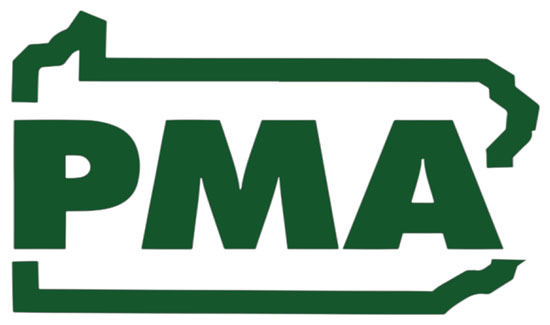Wolf Refusing to Honor General Assembly Vote to Revoke Emergency Declaration

The General Assembly has approved a concurrent resolution to revoke Gov. Wolf’s shutdown order signed in March, and extended earlier this month, launching a battle that will be decided in the courts. The governor has threatened to veto the resolution, but lawmakers who backed it insist he has no say over it; their approval alone makes it the law of the land.
“Nothing in the statute requires the resolution to go to the governor for signature/veto,” Senate Republican spokesperson Jenn Kocher tweeted during Senate debate of the resolution. “A concurrent resolution ending a disaster declaration is not an exercise of the legislature’s lawmaking authority that the Gov can sign/veto.”
The governor’s shutdown order was one of the harshest in the nation, according to a recent review by the Federal Reserve Bank of Philadelphia. It covered more businesses at a greater cost than comparable actions in other states. The economic and societal wreckage caused by the Wolf shutdown is unparalleled in Pennsylvania’s history.
“We are two months beyond the ‘flattening of the curve’,” said PMA President & CEO David N. Taylor. “Bipartisan majorities in both legislative chambers have expressed the will of Pennsylvanians, who now demand the return of their liberties and livelihoods.”
The shutdown has also decimated the state’s revenue collections. Legislative budget analysts expect the deficit at the end of the current fiscal year to fall in the $2.9 billion range, but firm numbers won’t be available until late summer as some tax collections have been delayed because of the pandemic.
Under that uncertainty, lawmakers approved a budget three weeks ago that appropriates spending for just the first five months of FY 2020-21, which begins July 1. They plan to revisit the budget in November when revenue collections become clearer.
In the meantime, lawmakers will also be looking to Washington D.C. where there is talk of a second rendering of the CARES Act, which disbursed billions in federal dollars to the states. There is also talk of allowing the states to backfill budget deficits with the money – a move the U.S. Treasury did not allow in the first round.
The $25 billion state spending plan, which includes no tax increases, covers all state programs for five months at the current fiscal year’s funding levels, except for basic education funding and food security programs, which are covered for the entire year. A CARES Act funding bill approved at the same time as the budget appropriates $2.6 billion of the $3.9 billion of the federal dollars now available to Pennsylvania.
Included among the programs funded with the CARES Act are: $692 million for long-term living services providers; $625 million for counties that did not receive a direct subsidy from the federal government; $225 million for small businesses.
“I am very pleased that the approved CARES funding will help address the needs of families and businesses who have been affected by COVID-19,” President Pro Tempore Joe Scarnati (R-Jefferson) said after passage of the bill. “We cannot forget to protect the livelihoods of Pennsylvanians while striving to protect lives. Senate Republicans will continue to work together to stand up for the hard-working men and women of Pennsylvania.”
Government directives aimed at mitigating the spread of the virus have damaged the economies of all states, but Pennsylvania’s response was exceptionally strident, according to a recent brief “Why Were Pennsylvania’s Initial UI [unemployment insurance] Claims So High?” by the Federal Reserve Bank of Philadelphia.
“For the week ending March 21, Pennsylvania led all states with 378,908 initial UI claims,” the brief said. “For the week ending March 28, Pennsylvania reported 405,880 initial claims, second only to California’s 878,727 claims.”
The disturbing trend continued through the week ending May 23, the Reserve Bank reported in a comparison of Pennsylvania with our neighboring states.
“Compared with the prior week, continued UI claims across our three states: rose to 56,963 from 50,780 (revised) in Delaware; fell to 547,795 from 586,532 (revised) in New Jersey; and rose to 1,026,339 from 907,252 (revised) in Pennsylvania.”
The brief noted that Pennsylvania’s shutdown of nonessential businesses occurred earlier and was more restrictive than in other states; it also noted “critical differences” in the scope of the business closures.
Neighboring Delaware and New Jersey exempted virtually all of the manufacturing sector as well as construction. In Pennsylvania, almost all residential and commercial construction was closed by the March shutdown order. As a result, at the height of the shutdown, nearly one in three Pennsylvanians were unemployed.
“Area contacts confirmed that the order immediately brought construction activity to a near standstill, with Philadelphia commercial building down 70 percent in the week ending March 28,” the brief said. “The order also applied to several thousand manufacturing plants across multiple industries, including cutlery, hand tools, and hardware; transportation equipment; and appliances.”
Moreover, the governor’s shutdown order for all but “life-sustaining” activities made no mention of exemptions for working remotely. This, the Commonwealth Foundation said, led to businesses, which could have operated remotely, to shut down completely because they were not considered to be life-sustaining.
“Gov. Wolf has kept our state’s local businesses completely in the dark for months as millions of people have lost jobs,” said Commonwealth Foundation Vice President Nathan Benefield in a news release responding to the Reserve Bank’s brief. “The shutdown of our economy was so strict, extensive, and confusing that local business owners didn’t know what to do. Many were closed while Wolf allowed their competitors to open.”
The concurrent resolution to end the shutdown won support from both sides of the aisle. Lawmakers cited the ongoing suffering of their constituents but also the fact that the governor, and he alone, is determining which business and other activities are essential and which aren’t. No elected official in America should possess that kind of power.







